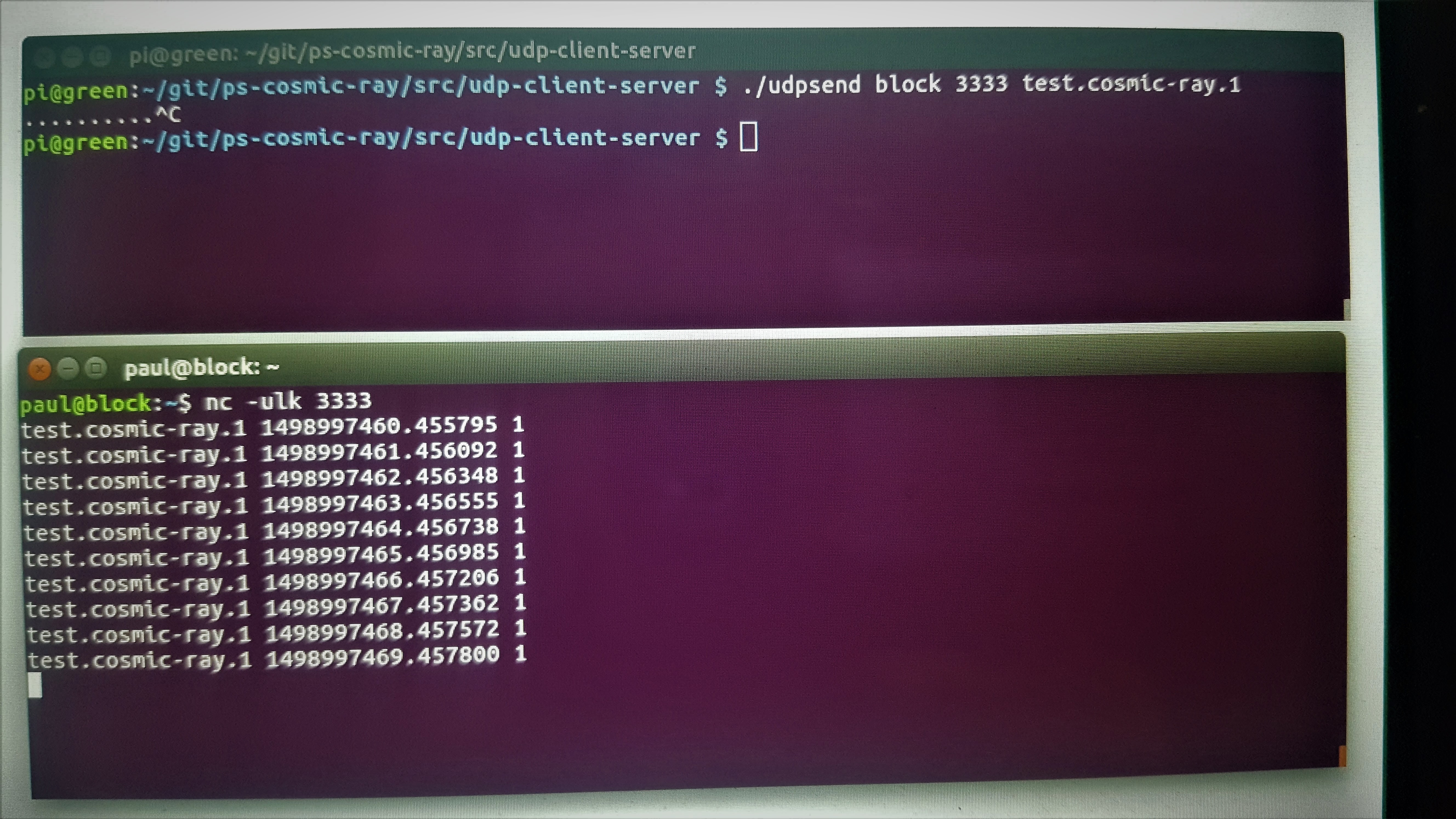Transmitting Events over the Network
I thought that I would split this next series off log entries into short pieces that I can write up as they are completed.
Programs and code seen here will be made available via a Github repository in due course.
The following image shows the program on the Raspberry Pi3 (udpsend) transmitting data across the network to a server (called 'block') which is listening for the packets (on UDP port 333, via the netcat/nc program) and printing the data as it is received.

The choice to use UDP packets instead of TCP means that there is no additional overhead in the reception of data across the network, and also allows incoming data to be received form multiple sources.
Wifi and Ethernet collision detection, avoidance and re-transmission should handle the case of small cosmic ray detection cascades, The affect of congestion on packet loss when large numbers of detectors (100's) and events are present will need to be investigated in due course. In the first instance, It may be necessary to reduce the data sent in an event packet.
The next log entry in this series will discuss the capture and transmission of actual events from a single detector.
 Paul Schulz
Paul Schulz
Discussions
Become a Hackaday.io Member
Create an account to leave a comment. Already have an account? Log In.